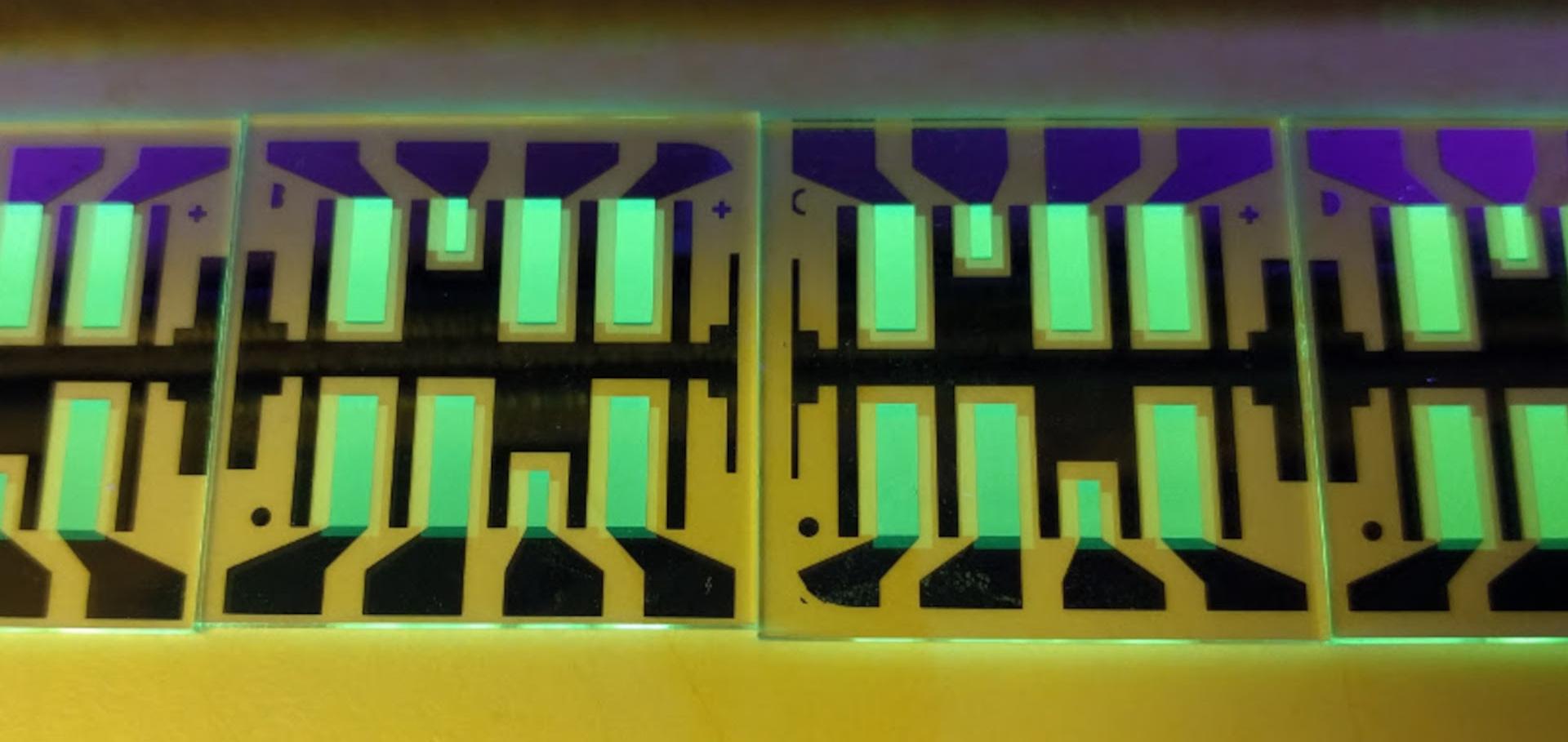A comparison of two air-stable molecular n-dopants for C60
Organic Electronics: physics, materials, applications 13:12 (2012) 3319-3325
Abstract:
We compare two air-stable n-dopants for the fullerene C60: AOB and DMBI-POH. Conductivity and Seebeck coefficient measurements were performed at various doping concentrations and the thermal activation of the conductivity was determined. A superlinear increase of conductivity upon doping was found for DMBI-POH doped C60 reaching a maximum conductivity of 5.3 S/cm. In contrast to this, a linear rise of conductivity and an exponential thermal activation of mobility was observed for C60 doped by AOB. This suggests a different doping mechanism for the two compounds. © 2012 Elsevier B.V. All rights reserved.Temperature activation of the photoinduced charge carrier generation efficiency in quaterthiophene:C60 mixed films
Journal of Physical Chemistry C 116:47 (2012) 25097-25105
Abstract:
We measure photoinduced excitations in a dicyanovinyl end-capped methylated quaterthiophene derivative in blends with the electron acceptor C60, as already employed in organic photovoltaics. By using DFT calculations and analyzing the recombination characteristics of the excited states revealed by photoinduced absorption (PIA) spectroscopy, the absorption peaks are assigned to triplet exciton, cation, and anion transitions. We determine the temperature dependent generation and recombination behavior of triplet excitons and cations in the mixed layer. At 10 K, we observe an enhanced triplet exciton generation rate compared to the pristine donor layer due to back recombination from a charge-transfer (CT) state at the donor-acceptor interface. With increasing temperature, the triplet generation rate first increases which is ascribed to an enhanced singlet exciton migration to this interface. Above 150 K, the triplet generation rate declines due to the beginning CT exciton separation, leading to the generation of free charge carriers. This temperature activated behavior is ascribed to a temperature activated increase of charge carrier mobility, facilitating CT exciton splitting. © 2012 American Chemical Society.Doping of Organic Semiconductors
Chapter in Physics of Organic Semiconductors, Wiley (2012) 425-496
Erratum: Organic solar cells based on a novel infrared absorbing aza-bodipy dye (Solar Energy Materials and Solar Cells (2012) 99 (176-181))
Solar Energy Materials and Solar Cells 105 (2012) 328
Materials Research Society Symposium Proceedings: Preface
, 2012


